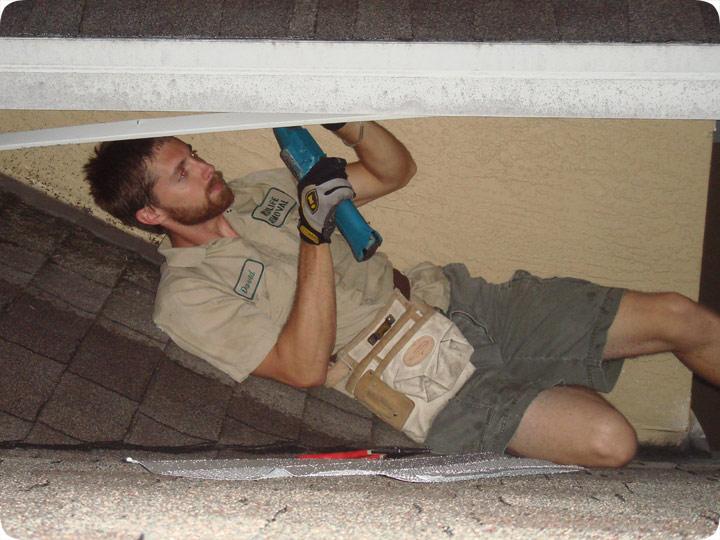-
info@aaanimalcontrol.com
Call us for help in your town
Humane Wildlife Education
Soffit Repair To Keep Critters Out of Attic

Most soffits are vulnerable to animal entry, and given the architecture of a house, the eave leads right into the attic, where animals like to live. Many animals, squirrels especially, are happy to live in the eave itself. The vents can be broken open, the screens chewed and clawed open. The most common entry point of all is the area where the soffit meets the roof. Such an area exists in the above photo, behind my head (out of photo) where the dormer soffit abuts against the roof. These areas are never sealed, and often have wide open holes that animals use to enter. In the above photo, I'm fixing an entire missing eave, which I think was a result of the 2005 hurricanes.
Remember, the most important step in a total wildlife control solution is to stop the source of the problem - if you have wild critters in your attic or home, the only way to permanently solve the problem is to close all the entry points! This is a special skill, and it requires extensive knowledge of both architecture and animal behavior. Being a skilled repairman also helps. All repairs should be done in such a way that keeps animals out for good - this often means sealing with steel, and sealing openings so that they are airtight, with no trace of airflow for animals to detect. Remember, rodents can gnaw through almost anything, and raccoons can tear through almost anything. While it's important to trap and remove animals, and clean up the waste they leave behind, the most important step in solving the critter problem and in keeping animals out forever is to identify and repair every last critter access point into the building. Without this crucial step, the job isn't complete.
Do it yourself: Visit my How To Do Wildlife Repairs page for tips and advice.
Learn more: Browse my Examples of Repair Jobs blog to see some wildlife repairs in action.
Get professional help: Visit my Nationwide Pro Directory of wildlife removal experts.
For more wildlife stories, click my Wildlife Blog, or click my below banner to hire a local trapper.





















